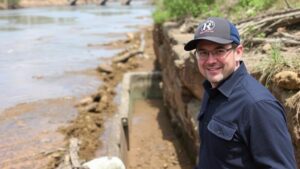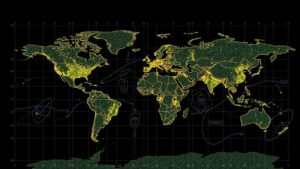Decoding Treasure Hunting Lore with Modern Tools to Uncover Hidden Wealth
Decoding Treasure Hunting Lore with Modern Tools to Uncover Hidden Wealth
Treasure hunting has fascinated generations, driven by tales of hidden wealth from lost civilizations to pirate gold. But, the approach to uncovering these riches has evolved significantly, with modern tools and technology enhancing the treasure hunting experience. This article delves into how these modern methodologies facilitate the decoding of historical lore to uncover hidden wealth across various regions and epochs.
The Historical Context of Treasure Hunting
Treasure hunting lore is rich with stories that often mask complex truths. For example, the legend of Captain Kidd–a notorious pirate–has spawned numerous treasure hunts along the Northeastern coast of the United States. Kidd was executed in 1701, but tales of his buried pirate gold continue to draw enthusiasts.
Statistics reveal that over $60 billion worth of treasure remains purportedly hidden in various locations worldwide, with significant concentrations in historically rich areas like the Caribbean and Latin America (Treasure Hunt: The Statistics, 2022).
Modern Tools Revolutionizing Treasure Hunting
Modern technology has transformed treasure hunting from a speculative venture into a more scientific search. The following tools are pivotal in modern treasure hunting:
- Metal Detectors: Since their advent in the mid-20th century, metal detectors have allowed treasure hunters to distinguish between valuable metals and other debris. Models vary widely, with advanced detectors boasting discrimination settings, ground balance, and target identification features.
- Ground Penetrating Radar (GPR): Used primarily in archaeology, GPR can image subsurface structures and anomalies without excavation, making it essential for locating buried treasure sites.
- Geographic Information Systems (GIS): GIS technologies analyze spatial data, aiding treasure hunters in identifying potential treasure hotspots using historical maps layered with geographic information. This is particularly useful in regions like Californias Gold Country, where historical mining districts are well-documented.
Interpreting Historical Maps and Lore
Decoding the tales associated with treasure hunting often relies on historical maps and documents. For example, the famous Map of Captain Morgan, a 17th-century pirate, includes coordinates of purported treasure sites. Researchers have utilized GIS tools to digitize and analyze these maps to identify locations that align with modern topography.
Plus, a cross-comparison of oral histories and documented accounts from local archives can yield insights into the veracity of treasure claims, as seen in the examination of the Hart Island treasure of New York, associated with various Civil War soldiers who reputedly buried their wealth.
Real-World Applications: Successful Discoveries
Several high-profile treasure discoveries in recent years illustrate the efficacy of combining traditional lore with modern technologies. One notable example is the discovery of a Spanish galleon, the Nuestra Señora de Atocha, which sank in 1622 off the Florida Keys. In 1985, explorer Mel Fisher utilized both underwater archeology and metal detecting to uncover valuables worth approximately $450 million, demonstrating the effectiveness of these modern approaches.
Another instance is the discovery of Lost Dutchmans Gold Mine in Arizona by treasure hunter Jacob Waltz. While the exact location of the mine remains debated, the combination of detailed topographical analysis and historical lore has inspired numerous successful expeditions in the Superstition Mountains, leading to significant gold finds.
Challenges and Considerations
Despite advancements, challenges remain in modern treasure hunting. Legal considerations regarding ownership rights to found treasures can complicate expeditions, particularly in international waters or protected lands. For example, the United Nations Convention on the Law of the Sea (UNCLOS) dictates the rights of treasure hunters in international waters.
Also, ethical considerations concerning the preservation of historical sites require attention. balance between discovery and conservation is crucial, as evidenced by the devastation wrought in some areas due to unregulated treasure hunting practices.
Conclusion and Future Outlook
Decoding treasure hunting lore using modern tools represents a fascinating intersection of history, technology, and adventure. The advent of sophisticated tools such as metal detectors, GPR, and GIS has significantly enhanced the search for hidden treasures, bringing to light valuable artifacts while navigating historical complexities and legal boundaries.
As technology continues to evolve, future treasure hunting endeavors stand to become even more precise, leveraging artificial intelligence to analyze data patterns and enhance the treasure hunting process. The quest for hidden wealth remains a blend of excitement, history, and the pursuit of knowledge, providing countless opportunities for discovery.
Actionable Takeaways
- Explore regional historical maps and lore before embarking on treasure hunts.
- Invest in modern treasure hunting tools to enhance the search process.
- Understand local laws and ethical guidelines surrounding treasure hunting.
- Consider collaborations with archaeological experts to ensure responsible discovery.
To wrap up, the pursuit of treasure hunting combines rich historical narratives with modern scientific inquiries, promising an exhilarating journey towards uncovering hidden wealth.



